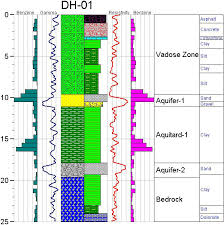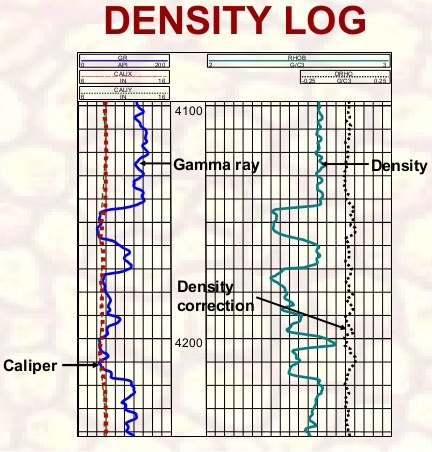1. Lithology Logs - These logs are designed to:
a. Identify permeable formations
b. Determine boundaries between permeable and non-permeable
formations
c. Provide lithology data for correlation with other wells
d. Provide a degree of certainty for quantifying the formation
lithology.
Examples of lithology logs are: Spontaneous Potentia and Gamma Ray

2. Porosity Logs - These logs are designed to:
a. Provide accurate lithologic and porosity determination
b. Provide data to distinguish between oil and gas
c. Provide porosity data for water saturation determination.
Examples of porosity logs are: Sonic/Acoustic, Neutron and Formation Density

3. Saturation (Resistivity) Logs - These logs are designed to:
a. Determine the thickness of a formation
b. Provide an accurate value for true formation resistivity
c. Provide information for correlation purposes
d. Provide a quick indication of formation pressure, hydrocarbon
content and producibility.
Examples of saturation logs are: Normal and Lateral Devices , Laterologs, Induction Logs

There are a number of auxiliary wireline services which can provide additional information to augment the interpretation of formation characteristics.
These include: 1) caliper logs, 2) directional logs, 3) dipmeter logs, 4) sidewall coring, and 5) formation testers.

%20(1).png)



